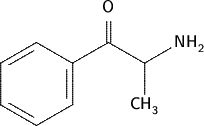Key elements for convention against drug trafficking selected; more psychotropic substances placed under international control
A broad range of elements to be included in a draft convention against illicit traffic in narcotic drugs and psychotropic substances was recommended by the Commission on Narcotic Drugs at its ninth special session (Vienna, 10-14 February 1986).
The Commission also decided to place 17 additional amphetamine-like drugs under international control.
In an opening statement, Mowaffak Allaf, Director-General of the United Nations Office in Vienna, observed that during 1985 wide political support had been expressed for strengthening international control of drugs and for preparing a new convention against illicit drug traffic and abuse. The International Conference on Drug Abuse and Illicit Trafficking to be held in Vienna in 1987 would be, he said, the culmination of international efforts to "combat this evil which threatens the stability of nations, the security of so-cieties and the well-being of present and future generations'.
Preparations for the Conference, which was proposed by the Secretary-General in May 1985 and endorsed by the General Assembly in December 1985 (resolution 40/122), were considered by the Commission acting as the Preparatory Body from 17 to 21 February (see accompanying story).
Assistant Secretary-General Tamar Oppenheimer, Director of the Narcotic Drugs Division and Secretary-General of the 1987 drug Conference, told the Commission that the range of responsibilities entrusted to it reflected "in unmistakable terms' the international community's growing concern over the escalation of drug abuse world-wide.
The 40-member Commission, the main policy-making organ of the United Nations in international drugcontrol matters, meets biennially, but from time to time holds special sessions in intervening years, as it did in 1986.
Draft convention: In 1984, the Commission was asked by the Assembly (resolution 39/141) and the Economic and Social Council to begin preparing a draft convention against traffic in narcotic drugs and psychotropic substances, to deal with various aspects of illicit traffic, particularly those not envisaged in existing international instruments.
As a result of discussions at its ninth special session, the Commission approved elements for inclusion in the new instrument, including: identification, tracing, freezing and forfeiture of proceeds from illicit drug trafficking; obligations concerning extradition for drug-related offences; measures to monitor or control specific chemicals, solvents and precursors used in the illegal processing or manufacture of controlled drugs; special problems of transit States; and measures to increase international co-operation in the fight against drug trafficking and abuse.
Substances scheduled: The 17 amphetamine-like substances approved for scheduling in accordance with the 1971 Convention on Psychotropic Substances were recommended for inclusion by the World Health Organization (WHO), which considered them liable to abuse and objects of illicit traffic. These are: cathinone, dimethoxyamphetamine (DMA), paramethoxyamphetamine (PMA), trimethoxyamphetamine (TMA), dimethoxy-4-ethylamphetamine (DOET), 3-methoxy-3, 4-methylene dioxyamphetamine (MMDA) and 3,4-methlenedioxy-methamphetamine (MDMA), fenetylline, levamphetamine, levomethamphetamine, cathine, N-ethylamphetamine, fenecamfamin, fenproparex, mefenorex, propylhexedrine and pyrovalerone.
Other action: The Commission also approved the agenda of the inter-regional meeting of heads of national drug law enforcement agencies, to be held from 28 July to 1 August in Vienna. It also reviewed the 1985 Report of the International Narcotics Control Board (E/INCB/1985/1), with several spakers expressing the hope that the threat posed by "designer drugs' could be defused at an early stage.
"Designer drugs' are made by altering the chemical structure of controlled substances enough to avoid falling under legal controls while retaining properties similar to the "parent' drugs.
Many participants also stressed the need for more States to ratify and fully implement existing drug control treaties. The Commission noted that in 1985, contributions to the United Nations Fund for Drug Abuse Control totalled $24.4 million. The need to increase funding levels commensurate with the magnitude of the problem was emphasized.
Speakers also stressed the need for international co-operation and co-ordination among States and between the three United Nations drug control units--the Commission, the International Narcotics Control Board and the Fund.
Photo: Opium poppy.
COPYRIGHT 1986 United Nations Publications
COPYRIGHT 2004 Gale Group



